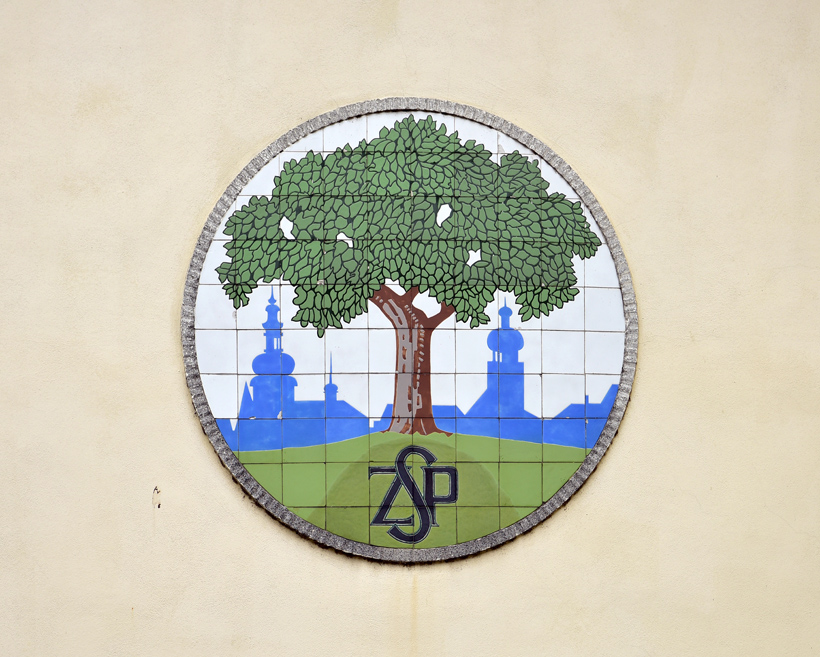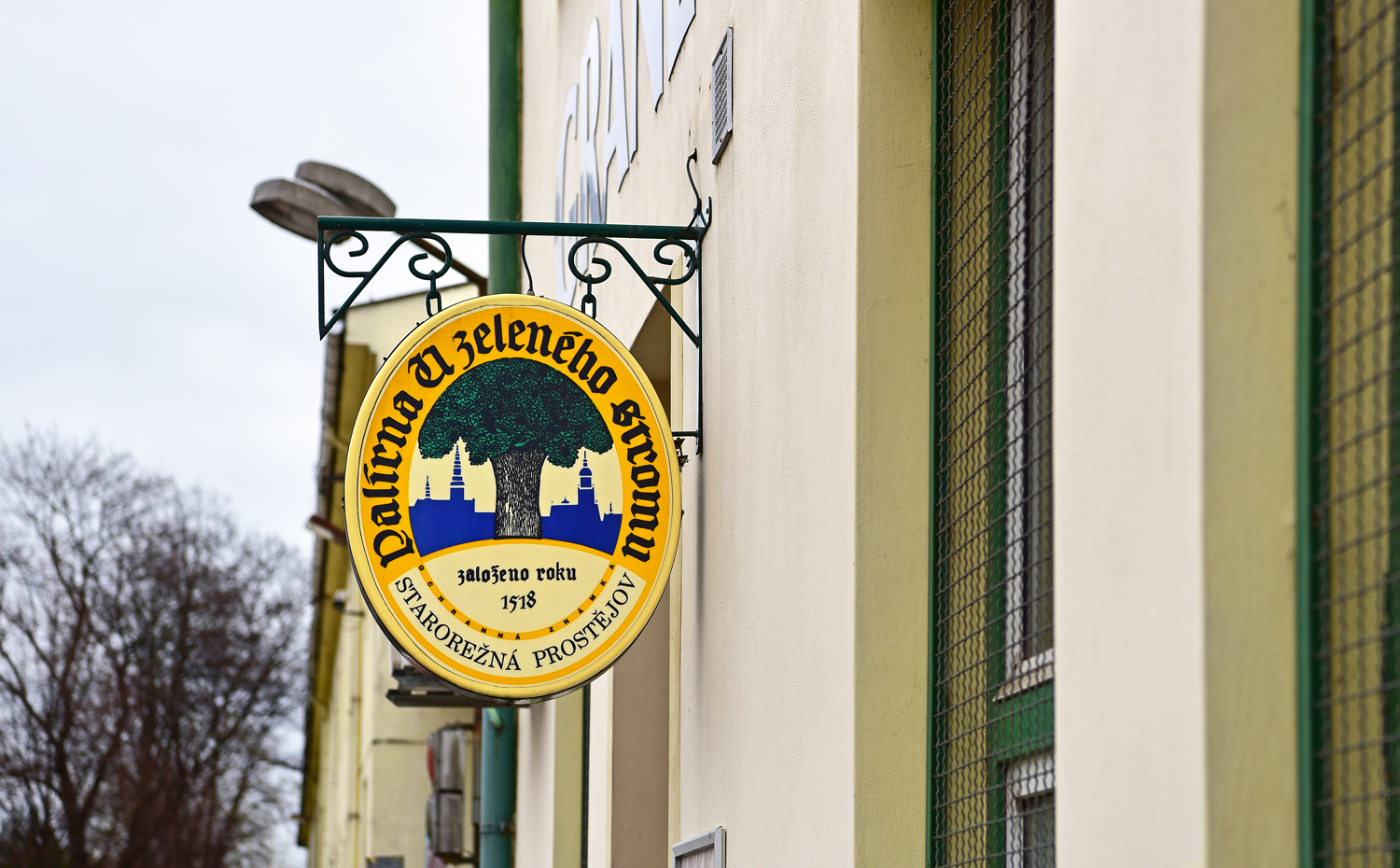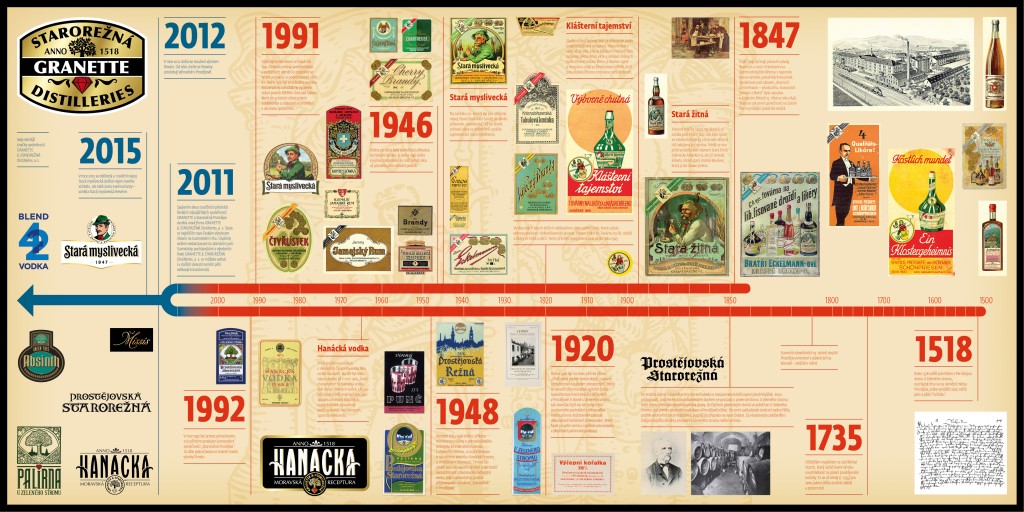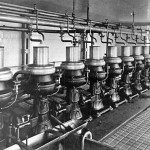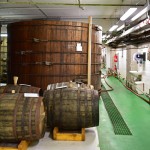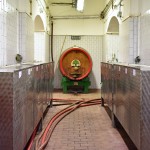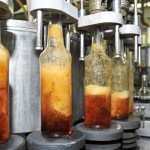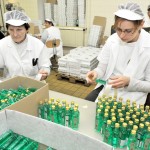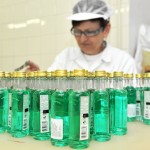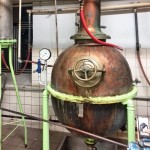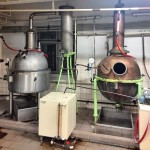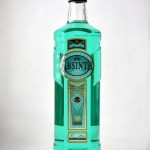Search for lists of the world’s oldest distilleries still in operation, and you’ll see a few names coming back over and over. Of course, several Scottish whiskies go back to the late 18th century. Buffalo Trace in Kentucky, dating from 1775, is America’s oldest. Further south, Jose Cuervo was first granted a permit to produce tequila in Jalisco, Mexico in 1795. Earlier still, Mount Gay Distilleries, established in 1703 in Barbados, is the oldest existing brand of rum. Back in Europe, the Old Bushmills Distillery, in Ireland, tops many lists with its license to distill from 1608. But then, Lucas Bols, or rather his ancestors, started making genevers and other liqueurs in Amsterdam in 1575.
Well, these lists got it all wrong. It seems the Internet has lied. The world’s oldest continuously operating distillery is U Zeleného Stromu in Prostějov, a little Moravian city between Brno and Olomouc, in Czech Republic. Established in 1518. Ever wonder what a distillery from the 16th century looks like? It looks something like this:

What did you expect? A bearded elder meticulously polishing an antique copper still in a shanty behind his garden, living in a cabin in the countryside, every inch of flat surface covered with hand-labeled bottles? Don’t you remember what I told you in Absinthe, Part 1? And if you think that things would be radically different in some of those other world’s oldest distilleries, think again. For example, Old Bushmills’s 1608 mention simply refers to the year when a royal license was granted to some local landowner to distill whiskey “in the area”; the current building was rebuilt after a fire in 1885. (That’s a problem with distilleries: they burn really, really well.)
U Zeleného Stromu shares a few similarities with Old Bushmills, in fact — the loosely-connected license to distill and the much more recent current building. The history of the distillery starts in 1518 with the bizarrely named Mr. Yesh, a hunter who came from nearby Seloutky, 5 km from Prostějov.
In 1518, Mr. Yesh receives a permit to distill, and founds U Zeleného Stromu, the distillery “by the Green Tree”, possibly in honor of the forest near his native village. At this time, distilleries double as pubs where people can hang out, have a drink, and do all the great things that people do in pubs. As a matter of fact, spirit is often made by distilling spoiled wine and beer. The alcohol trade goes on prospering quite well in Prostějov, and by 1697, there are 53 inns producing liquor, wine, and beer. Then a fire devastates half of the town, and only 15 of these inns are spared — including the Green Tree, then the locals’ favorite.
But 1735 is a more defining moment for the distillery. The owner Michal Storch starts macerating herbs in the alcohol he produces to make herbal potions with medicinal properties (70 years before Becher and his herb-infused alcoholic potion for stomach aches), and Prostejovska Starorežná is born. This is a spirit distilled from rye mixed with 11 herbs and spices (predominantly anise and goldenrod), aged for three years. Storch was a pioneer in the region in making grain alcohol instead of fruit brandy or distilled spoiled wine. Prostejovska Starorežná literally translates to “old Prostejov rye liqueur” and it’s still produced to this day.
In 1843 comes another instrumental owner, Jakub Vojáček. Until then, the distillery was still an artisanal business, and no two bottles were exactly the same. Vojáček turns the enterprise into something more akin to a factory, and the products are now made from standardized recipes. The first mention of absinthe at the distillery also dates from this time.
Meanwhile, in the small village of Krásné Březno in northern Bohemia…
In 1847, Ludwig Bramsch and Louis Eckelmann found Bohemia’s first company to produce baker’s yeast. A year later, they decide to expand vertically and use their yeast to make not bread, like the narrow-minded might have thought, but booze. They create what will eventually become Stará Myslivecká (“Old Huntsman’s Liquor”, a sort of flavored wine brandy), and shortly after, the Klášterní Tajemství (“Monastic Secret”, a mystery mix of 19 herbs, macerated in alcohol, and then distilled). The Bramsch & Eckelmann archives also show that they used to make absinthe at the beginning of the 20th century.
- Bramsch & Eckelmann – Ink Print circa 1920
- Bramsch & Eckelmann – Yeast Production Plant
- Bramsch & Eckelmann – Absinthe from a Catalog circa 1900
What does this have to do with U Zeleného Stromu, you may ask? In 2011, the two entities merge, and become known as GRANETTE & STAROREŽNÁ Distilleries. (It is they who graciously provided the images from the Bramsch & Eckelmann archives.)
But let’s get back to Vojáček and U Zeleného Stromu. Around 1920, after the death of Vojáček’s sons, the distillery is owned by the town of Prostějov for a few years before joining the Cooperative of Innkeepers, a collective of over a thousand owners. This prosperous time is commemorated in 1930 with a big oak barrel, which we’ll see in a few minutes.
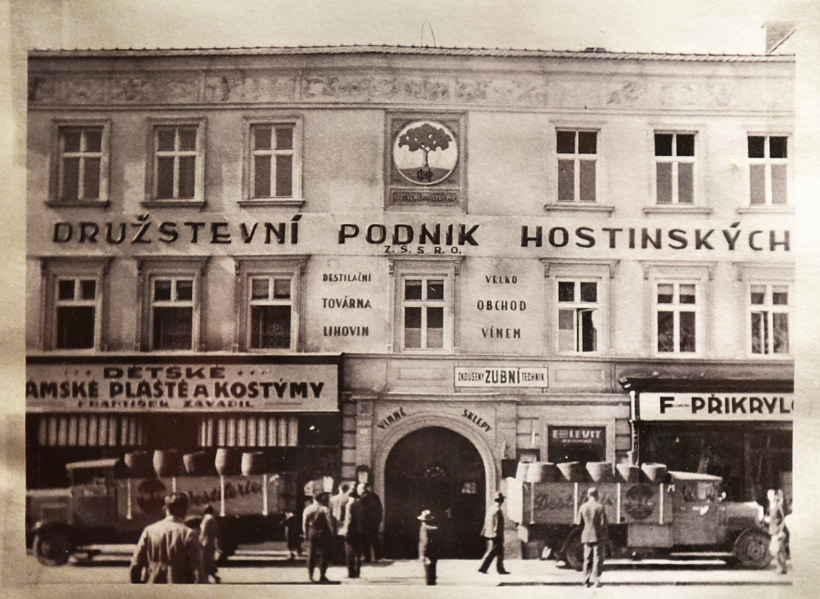
However, after the war, the communists nationalize the company. The Prostějov distillery becomes affiliated with the Hanácká distillery in Olomouc, and its name changes to Starorežná. As often in the Czech narrative, the chronology of events during the next 40 years of communism is mostly ignored. In 1959, the distillery leaves its cramped quarters in the town center and moves to its current premises, a former brewery. 1965 sees the introduction of Czechoslovakia’s first vodka, Hanácká — because what’s an Eastern Bloc country without its own brand of fine vodka?
Rebirth comes in 1992 when the company is privatized. As I already mentioned, in 2011 it merges with the former Bramsch & Eckelmann company (who have undergone many ownership and name changes themselves) to become GRANETTE & STAROREŽNÁ Distilleries. In 2012, Starorežná/Green Tree becomes the group’s only location where alcohol is still produced.
One can find out more about Green Tree’s history in a small museum within the distillery, although visits require arrangement in advance. Like the Becherovka museum, the place combines a wax figure (in this case of William II of Pernstein, who granted that permit to distill to Mr. Yesh back in 1518) with photographs and distillery paraphernalia (labels and barrels, antique bottling lines, and a big pot that must have been a still), plus a curious recreation of a communist office. The latter is particularly ironic, considering that, save for the machinery upgrades necessary to run a normal alcohol plant in this day and age, the whole place seems frozen in socialist times, from the austere facade, to the 70’s office furniture, to the board where workers check in and out with their paper “control cards”.
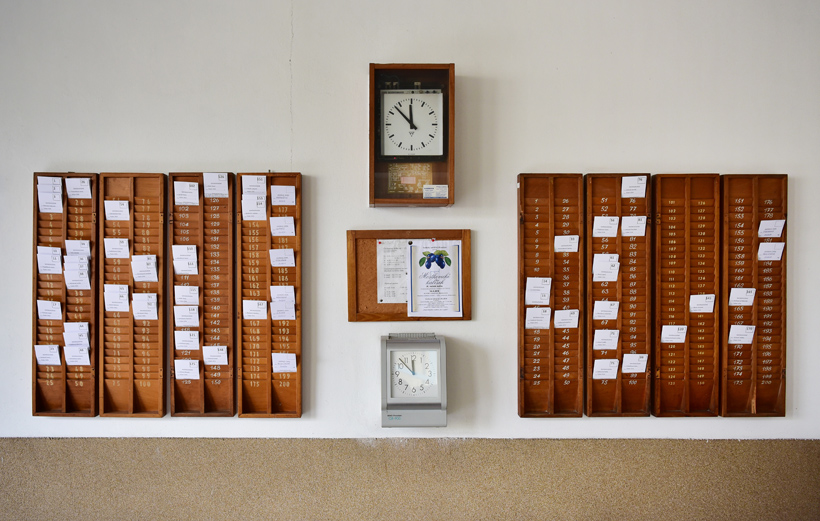
In that regard, my original prediction that Green Tree absinthe would be made in a communist factory proved to be right. The rest of my prediction? Not so much. The factory’s not crumbling, I have no reason to believe it’s run by the mafia, it’s a 2 1/2 hour drive from Prague, I didn’t see any rusty tanks, and the closest thing on premises to a drunken, ventripotent, probably-balding interloper is probably me.
After the museum, escorted by export manager Pavel Hampl and a marketing chaperone, I start my visit to the production plant. First stop, the warehouse where the Stará Myslivecká liqueur is aging in oak barrels (it’s quite amusing to compare the actual warehouse with the marketing images from the official web site). Stará Myslivecká, which as I mentioned earlier means “Old Huntsman’s Liquor” and which depicts a hunter on the label, starts with a wine brandy that supposedly comes from the Cognac region in France. In the case of the newer product Stará Myslivecká Reserve, this brandy is aged for three years in the small casks you see in my pictures. The alcohol is then mixed with “extracts from dried fruit, walnuts, exotic spices and herbs”, according to a secret recipe that hasn’t changed for over 150 years and is protected by a handful of devoted and incorruptible distillers (I do hear that it includes prunes, raisins, and dried apricots). Finally, it goes into large oak barrels, where it will mature for three months before being bottled. These large barrels are among the largest in the region, and many other distilleries have replaced them with smaller casks because of the high cost of any necessary repairs. They’re several decades old so they don’t really impart any wood flavor, simply giving the existing aromas a chance to blend better. Supposedly, Stará Myslivecká exhibits a one-of-a-kind property: it tastes like cognac at room temperature, and like whisky when it’s chilled. Seriously! It’s been certified by experts in a blind test! I’d be only half surprised if it also tastes like rum when you heat it…
Yet the biggest mystery to me is the original name of the spirit: Stará Žitná, which, just like the Starorežná we talked about earlier, means “old rye liqueur”. Why would someone call a wine brandy “rye liqueur” and put a portrait of a hunter on the label? So great was the incomprehension of the public that the distillery decided to call it Stará Myslivecká instead.
Then there are various less glamorous tanks. Stainless steel tanks holding the Myslivecká before it’s blended and transferred to oak barrels. Big cement tanks for vodka, where it stays for a few months for the flavors to blend. And the distillery makes a ton of vodka. Its web site promotes no less than five lines of vodkas, for a total of 46 products. Name a flavor, they have it! They even have flavors of which you’ve never dreamed: bitter herb, of course, with the Karpatka Hořká (bitter Carpathian vodka), but also lavender (for the recovering cologne-drinker), golden (for the nouveau riche or the nouveau pauvre), rum (for the inland pirate wannabe, this is vodka flavored with rum extract, called tuzemák) and in the SQUASH line, Cannabis REVOLT or Starfruit & Brazilian Melon PROVOCATION. But the best of the lot is Hanácká, which was supposedly first reserved for the apparachiks in communist days (like milk, meat, and many other goods not strictly necessary for survival, some would say). This is no ordinary vodka: “alcohol for its production is undergoing special treatment along the lines of traditional Russian vodkas”, “a significant share of its quality comes undoubtedly form Prostejov’s water [undoubtedly]” , and it boasts an “excellent, slightly alkaline taste that is so popular with vodka drinkers” — finally, I now have something intelligent to say when I taste vodka! What you should know is that, as is common throughout Eastern Europe, the alcohol used in Starorežná’s vodkas isn’t distilled on the premises; it’s purchased at 96% ABV, then mixed with water and, optionally, flavoring.
Finally, in the middle of all these barrels and tanks and other stainless steel bins, sits the famous 1930 commemorative barrel from the Cooperative of Innkeepers (“DPH” standing for Družstevní Podnik Hostinských, Cooperative Company of Innkeepers), with its carved Green Tree logo and the dates 1920-1930 marking their 10th anniversary. It’s filled with a cherry brandy called Griotka, a product that still exists today and, nowadays at least, is made with real cherry juice and almond aroma.
And look, there, in the corner, there’s even a small 150-liter plastic barrel of absinthe! The distillery produces about 100,000 liters of absinthe per year (of which approximately 2/3 is destined for export). In other words, it all fits in a few large tanks, maybe even a single one at any given moment (the small barrel below is a special batch of “black Absinthe”). As a comparison, the whole spirit production is 12,500,000 liters, which represents 20% of Czech Republic’s total, and makes GRANETTE & STAROREŽNÁ Distilleries the second largest spirit producer in the country. Absinthe, though available in three colors and in bottle sizes ranging from miniature to a whopping 2 liters, is a very marginal item that’s not very popular in Czech Republic (except for Prague where tourists love it).
I do manage to get some details about the green fairy of Moravia, albeit some of them seem questionable or at times contradictory. The production of absinthe at the distillery never stopped since it started in the 1840s, although the recipe has changed — which would make Green Tree’s absinthe the oldest continuously produced absinthe in Europe. Over the years, absinthes were made both in the Bohemian and French styles (see my previous article). The Bohemian style was introduced about 25 years ago, but today’s process conforms to the French style, although it’s not completely clear whether Bohemian absinthes are still made or not. No herbal oils are used, only dry herbs that are bought once a year for the whole year, and kept macerating in spirit until distillation. Pavel’s not willing to explain the process at length, invoking corporate secrecy, but he claims that most absinthes are more or less the same because they all use the same 3 main ingredients (wormwood, anise, and fennel), with small differences resulting from the exact production method and the remained herbs used. I can imagine the absinthe aficionados pulling out their hair reading that sentence, but I’m just transcribing on person’s opinion.
Despite the rather large volumes, I am told with great seriousness that this is a family company. This requires some explanation. First, this is the only large distillery in the country that’s 100% Czech-owned. Next, many employees have been working there for more than 30 years. Finally, the man talks very little about all the vodka stuff, even though it represents the vast majority of what’s made here. He sees GRANETTE & STAROREŽNÁ as a specialist of herbal products, trying to produce the best spirits possible by using only high-quality herbs and thoroughly controlling the taste of the final products.
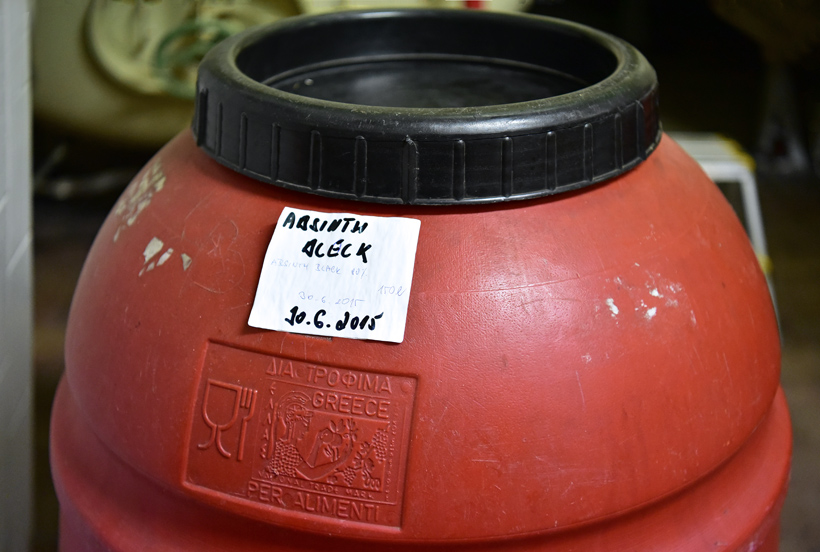
Leaving the warehouse, we take a quick look at the bottling line (although I’m not allowed to get in). The plant can produce up to 12,000 bottles per hour, depending on the bottles and labels. I’m attaching some pictures that the marketing department sent me later. Who says Green Tree absinthe isn’t a high-end product? The labels on those miniature bottles are affixed by hand!
There’s another room that I don’t get to visit, and that’s more of a bummer. It’s the still room! There are very few products that are actually distilled on the premises: the pure fruit brandies, the Starorežná and its little sister the Režná, and the absinthes. Everything else, which represents the bulk of the plant’s production, is made from purchased grain alcohol. I’m therefore not surprised when Pavel tells me that they use “standard small stills”. More secrecy again: visitors aren’t allowed in that part of the plant, the production process (such as the maceration and distillation) isn’t explained in more details than what can be found in marketing materials, and more than once I hear stories of “secret recipes” known by only a few people in the company. I eventually received some more pictures from the marketing department, though. Small stills, indeed:
After returning to the office, I bring the conversation back to absinthe. In addition to the Green Tree brand sold on the Czech market, the distillery makes absinthe for foreign companies, with slightly different recipes for different markets. There are bottles with no artificial color that feature herbs at the bottom, made for the Russian and Australian markets. And while Central European taste favors a low anise content, there’s a version with more anise, prepared for Hill’s North America (available only in Canada, see again Part 1). For Czech Republic and Mexico, there’s a black absinthe made with a lot of chlorophyll (it’s actually a very dark green). And for local bartenders who think that Listerine-green is boring, there’s a red version. Pavel’s preference clearly goes to the “natural” stuff with the herbs at the bottom, and he manages to provide me with a bottle of the Koruna absinthe produced for Australia (although I make a mental note to stop at the supermarket to get a bottle of the regular Green Tree absinthe too).
As for what the absinthe actually tastes like… I will keep you in suspense until I finish my mini tour of the Moravian distilleries! I leave U Zeleného Stromu somewhat frustrated not to have seen the whole fabrication process, but happy to have visited what really might be the world’s oldest distillery, and filled with new insights on Czech herbal spirits.
Despite its modern digs, GRANETTE & STAROREŽNÁ has managed to preserve its iconic products, some of them over 250 years old. Herbal spirits really became popular in Europe during the very end of the 18th century and the first half of the 19th century — absinthe was invented in 1792. With the Starorežná dating back to 1735 (two years before the Chartreuse elixir), Green Tree was at the forefront of the movement. Like absinthe, Starorežná contains anise, but the other herbs differ, and they’re macerated in a fermenting cereal wort, not alcohol, before distillation. Making absinthe in Czech Republic isn’t just the exploitation of a Western fad; it’s a sensible extension of a tradition of herbal spirits.
Special thanks to GRANETTE & STAROREŽNÁ for arranging my tour of the distillery and providing some of the images used in this post.
